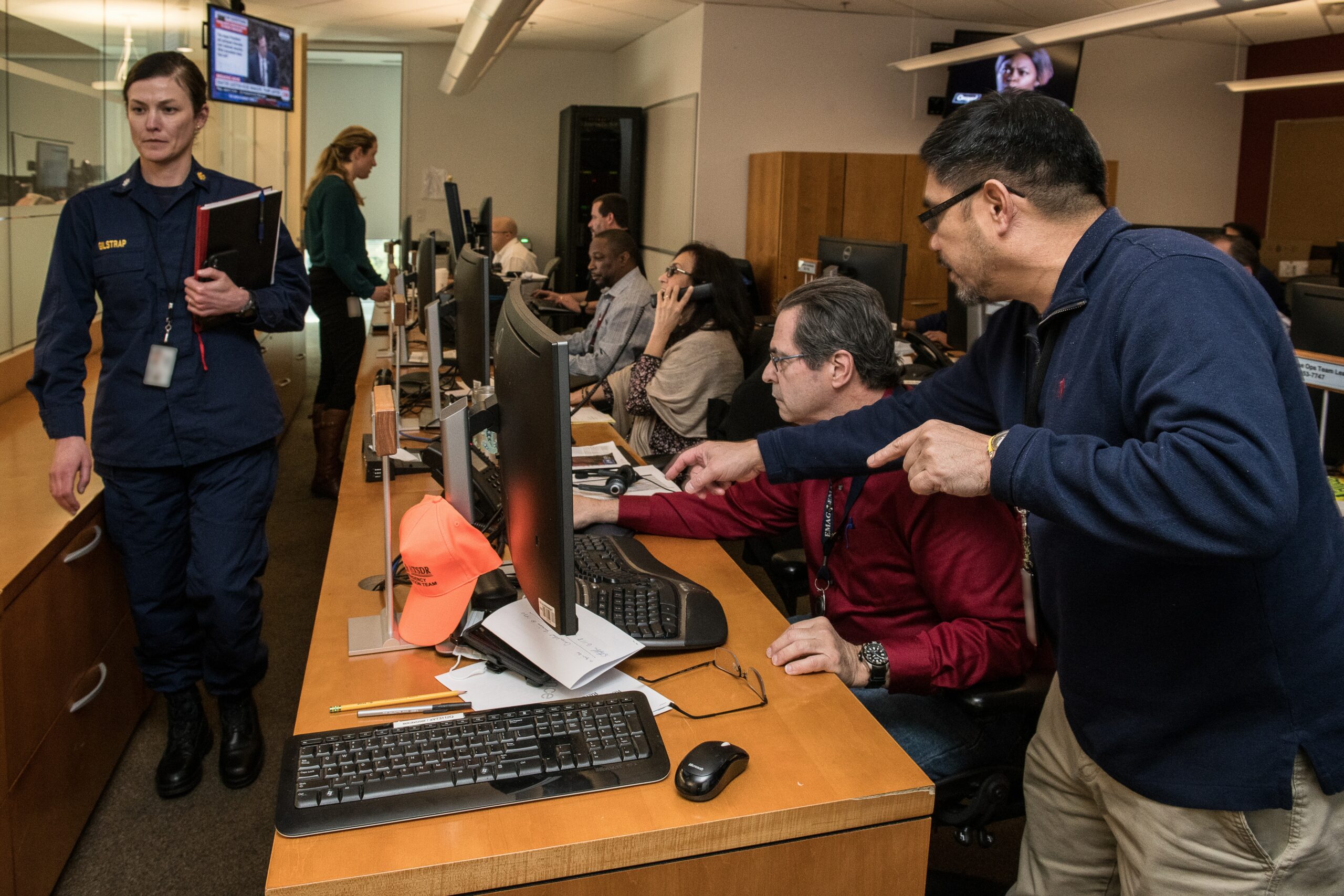IT hardware asset management (HAM) refers to keeping track of all the physical equipment used in your company’s technology toolkit. Proper HAM involves taking inventory of assets from when they are bought until they are retired. Some key things HAM covers include:
- Knowing what hardware you own, like computers, phones, and network gear
- Where each item is located and who is responsible for it
- The condition and age of every asset
- Warranty and service agreement details
- Maintaining security and supporting audits
By managing your hardware resources through their entire lifecycle, you can save money and boost productivity and security. This guide will explain the hardware asset process in detail. We’ll look at the different asset categories, the stages they go through, and the benefits of good management practices. Some challenges will also be discussed, along with solutions to help you get started.
Understanding Hardware Assets
So, now that we know what IT hardware asset management is let’s dive deeper into understanding the assets themselves. As an asset manager, you must be familiar with your organization’s different types of hardware.
Hardware Assets Defined
A hardware asset is any physical technology component that your company utilizes. It includes devices currently in active use and those in storage awaiting deployment. Hardware assets fall under four main categories:
End-User Devices
The equipment employees use in their daily work makes up this group. Think computers, laptops, tablets, smartphones, and accessories like monitors, keyboards, and mice. These assets keep your workforce productive.

Networking & Telecom Gear
Key examples include routers, switches, firewalls, load balancers, and VOIP phones. This infrastructure hardware powers your digital communications backbone.
Data Center Equipment
Servers, storage solutions, utilities like cooling systems, and security devices reside in your data centers to ensure seamless operations. High-value assets!
Peripherals
Scanners, printers, and projectors often need to be noticed but are important peripherals that enhance on-site operations. Other items could include cables, adapters, or headsets, depending on your needs.
Remote Worker Assets
Remember, employees who work remotely – their devices used for business tasks also need to be accounted for. HAM covers off-site assets, too, to ensure consistent support.
Understanding these categories gives you a solid foundation for inventorying your hardware estate. You’ll know what details to track for each asset, like purchase records, specifications, and locations. It makes managing large volumes of resources much more organized.
The Asset Lifecycle Process
Now that we’ve covered what hardware assets are, let’s discuss their journey – from the beginning of their life with your organization to the end. Understanding each stage of the hardware asset lifecycle is key for asset managers.
Requesting New Assets: The first step is identifying needs. Your business goals and technology roadmap will dictate what hardware may be required. Budget planning also occurs at this phase.
Fulfilling Requests: Once approved, it’s time to purchase assets through vendors. Consider warranty options, support plans, and compatibility with your existing infrastructure.
Deployment: Newly received hardware must now be rolled out. It involves configuring devices, installing necessary software, and setting up asset records in your management system. Remember to tag items for identification later on.
Monitoring Assets: After deployment, keep track of hardware performance and condition through regular scans. It helps ensure optimal usage and quickly identifies any maintenance needs. Integrations with monitoring tools like SNMP make this stage seamless.
Servicing Assets: All technology requires upkeep over time. A routine servicing schedule keeps items running smoothly through preventative maintenance, repairs, and upgrades as needed. It extends usable lifespans.
Retirement: As assets age past their prime, it’s time to phase them out. Carefully retire devices by removing all the organization’s private data first and performing a secure factory reset where possible. Some items may be reused internally or sold off.
Understanding this cyclical process enables you to make informed decisions at each phase. Hardware will transition according to plan rather than haphazardly. It brings structure and efficiency to your asset operations.
Benefits to Your Business
By now, you can see that managing hardware assets properly is no small task. But I promise you, the rewards of taking the time to do it right are well worth it. Let’s explore some top ways your business gains benefits:
Cost Savings: With clear visibility into your inventory, you can reduce maintenance costs through preventative care. You’ll also avoid overspending by eliminating waste: accurate budgets and strategic replacement planning further trim expenses.
Productivity Boost: Having the right equipment in the right hands maximizes your workforce efficiency. Downtime is kept minimal when issues are caught before major failures occur. Automated processes from HAM solutions give your team more time back in their day.
Security & Compliance: Knowing every device and detail allows stronger security controls to be set. You can quickly patch vulnerabilities and retire outdated assets. Come audit season; full records are readily available for review. Peace of mind!
Optimized Usage: HAM sheds light on underutilized existing hardware that could replace new purchases. It also prevents unused items from cluttering up storage. You get the most out of every dollar invested in tech.
Lifecycle Management: Complete visibility across purchase, deployment, maintenance, and disposal empowers smarter long-term planning. Data-driven decisions are made at each stage for maximum value extraction from assets.
While HAM requires initial time and resources, the long-term advantages far outweigh that cost.
Overcoming Common Challenges

Every process is flawed, and hardware asset management is no exception. Many organizations need help with common hurdles that can derail their best efforts. But have no fear – with some planning, you can overcome these challenges:
Lack of Organization: Without structure, hardware records quickly devolve into chaos. Combat this by choosing an asset management solution that fits your needs. Look for tools with customizable workflows and built-in best practices.
Changes Over Time: Technology is ever-evolving. Be ready to adapt your processes for new types of assets, configuration changes, and software/firmware updates. Flexible solutions let you modernize documentation methods.
Budgeting Difficulties: Make sure to track hardware usage metrics and lifecycle costs. This insight allows for accurate forecasting of future budgets, replacements, or upgrades needed. Know your true IT expenses.
Manual Workloads: Relying on spreadsheets leaves room for human error and is time-consuming. Automate repetitive tasks through integrated systems that sync with your existing IT tools.
Remote Asset Visibility: Extend your HAM coverage to off-site employees by enabling remote inventory scans. Mobile apps and agent software bring off-network devices onto your radar.
You can smoothly overcome common hurdles with the right strategy and technology partner. HAM is a journey of continuous improvement. But rest assured, by prioritizing your hardware foundation, you set your organization up for long-term, data-driven success.
Conclusion
IT hardware asset management refers to tracking all physical equipment from purchase to retirement.
Assets include:
- End-user devices.
- Network/telecom gear.
- Data center systems.
- Peripherals used by on-site and remote employees.
Hardware transitions through stages of request, fulfillment, deployment, monitoring, servicing, and retirement, with asset managers guiding each phase.
Benefits to organizations include cost savings, improved productivity, stronger security and compliance, optimized usage, and better long-term planning.
Challenges like disorganization changes over time and manual work can be addressed through automation and flexible asset management solutions.
Frequently Asked Questions
What tools can help with hardware asset management?
Many software solutions automate HAM tasks like inventorying, tracking locations, and lifecycles. Consider an integrated platform compatible with your ITSM/ITAM systems. Look for mobile and remote scanning, customizable workflows, and reporting. Automation saves time over manual efforts.
How often should hardware assets be inventoried?
Most experts recommend scanning your full inventory quarterly and high-value/mobile assets monthly. Catching changes early is key. But evaluate your environment – fast-changing organizations may need biweekly scans. The goal is visibility into what’s being used and its condition. Build routine scans into your processes for continuous monitoring.
What information should be collected about each asset?
Capture the essential details – serial numbers, model info, purchase records, locations, users, warranty and service contract dates, software/firmware. Note any custom configurations—track metrics like uptime and issue history. Integrate with your CMDB for a single source of truth. Collect just enough structured data for optimal usage insights and support needs.
How can we track assets being used remotely?
Leverage remote monitoring and management tools. Configure agents on off-site laptops and mobile devices that call home inventory details on a schedule. Consider mobile apps for manual scans, too. Geo-tagging captures usage locations. Automated alerts inform you of remote asset health and usage and if devices leave your organization’s approved areas.
What should we do if an asset is lost or stolen?
Immediately remove its access from your network and change related credentials. Escalate to your security team, who can remotely wipe stored data. File a police report for insurance, providing the asset’s details and your organization’s protocols. Review how it went missing to identify process gaps. Notify staff of any new security measures resulting from the incident.

